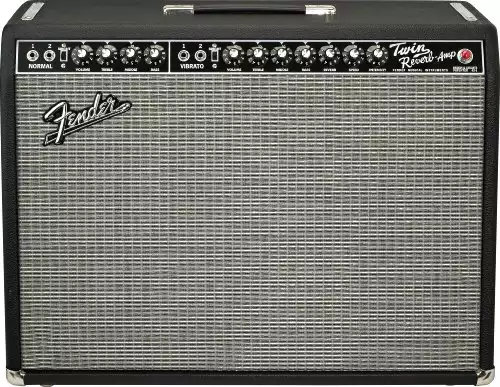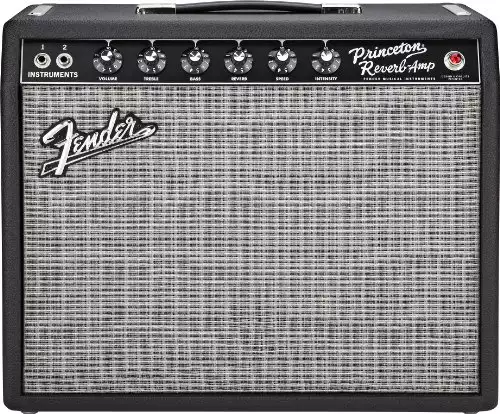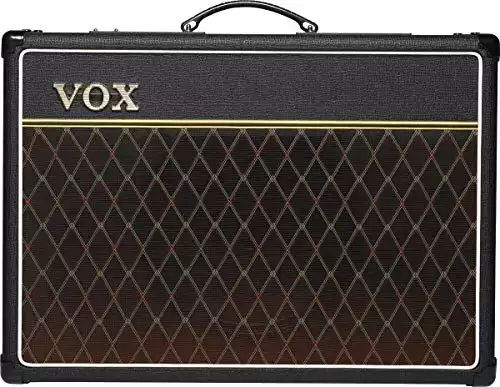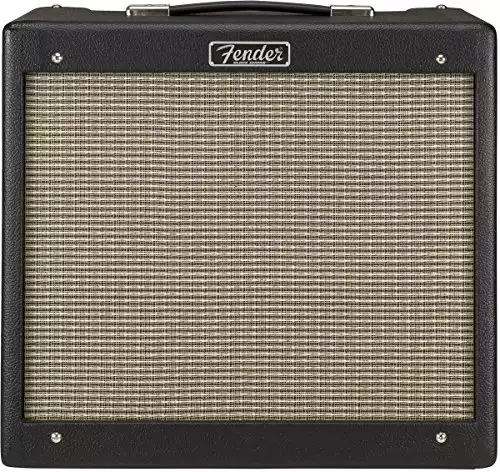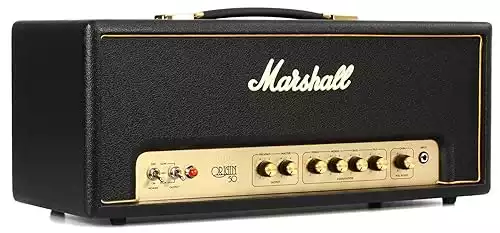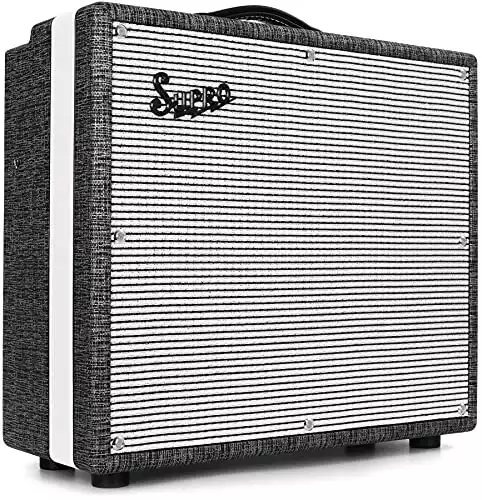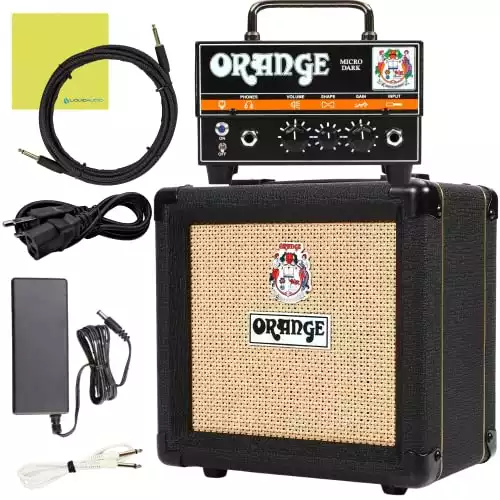Embarking on a journey through the realm of clean guitar amplification, we delve into the nuanced qualities that define the best clean amps available in the market. These amplifiers are more than just tools; they are the vessels that carry the pure, unadulterated tone of your guitar to the ears of your audience. In this article, we will explore:
- The Hallmarks of a Great Clean Amp: Understanding what makes an amplifier excel at producing clear, articulate, and vibrant clean tones.
- Expert Picks for the Best Clean Amps: A carefully selected list of amplifiers renowned for their exceptional clean sounds, along with their key features.
- Making the Right Choice for Your Sound: Insights to help you select an amplifier that not only suits your style but also enhances your musical expression.
With these points in mind, let’s explore the top contenders in the world of clean amplification, ensuring that you find the perfect match to articulate your musical voice.
What Are The Best Clean Amps?
- Fender ’65 Twin Reverb
- Fender Princeton Reverb
- Vox AC30
- Fender Blues Junior III
- Marshall Origin 50C
- Supro Black Magick 12
- Orange Micro Dark Terror
Each of these amplifiers stands out for its unique ability to articulate clean tones, whether you’re looking for something classic, modern, compact, or versatile. This selection caters to a wide array of preferences, ensuring that every guitarist finds their perfect sonic match for a clean sound.
1. Fender ’65 Twin Reverb
The Fender '65 Twin Reverb is a classic staple in the music world, renowned for its pristine and bell-like clean tones. This amp boasts dual channels, Normal and Vibrato, and is equipped with 2 x 12" Jensen C-12K speakers, delivering bright and articulate sound. Its lush spring reverb and harmonic vibrato add depth and character to its sonic profile. With its classic black tolex covering and chrome handle, the Twin Reverb not only sounds good but looks the part too.
- Crystal clear, bell-like tones.
- Robust build quality and iconic design.
- Versatile sound suitable for various music genres.
Why You Should Buy It:
- It offers ample headroom, perfect for players who need a clear and loud clean tone.
- Its vintage aesthetics and sound make it a timeless piece for any collector or professional musician.
Technical Features:
- Wattage: 85 Watts
- Power Tubes: 4 x 6L6 Groove Tubes
- 2 x 12″ Jensen C-12K Speakers
- Lush Spring Reverb
- Harmonic Vibrato
Review:
The Fender ’65 Twin Reverb is an epitome of the classic Fender sound. Its clean channel is incredibly pure and bright, making it ideal for players who love to use pedals. The reverb and vibrato are the cherries on top, providing an atmospheric depth to the already rich tone.
Verdict:
A must-have for those seeking the ultimate clean tone with vintage flair.
Perfect For:
Guitarists in need of a reliable, high-quality amp for live performances, studio recording, and those who love the classic Fender sound.
2. Fender Princeton Reverb
The Fender Princeton Reverb offers a smaller, more intimate alternative to larger amps. With a 12-watt tube power and a single 10" Jensen C10R speaker, it delivers warm, responsive clean tones. This amp is known for its touch-sensitive overdrive at higher volumes. Its long-spring reverb and tube tremolo add to its vintage character. The amp's classic Fender Blackface aesthetics with lacquered tweed covering make it a visually appealing piece.
- Lightweight and portable.
- Rich and warm clean tones.
- Vintage aesthetics and build quality.
Why You Should Buy It:
- Ideal for bedroom playing and smaller gigs due to its compact size.
- Offers a focused tone with lush ambient textures.
Technical Features:
- Power: 12 watts
- Power Tubes: 2 x 6V6
- 1 x 10″ Jensen C10R Speaker
- Long-spring Reverb
- Tube Tremolo
Review:
The Princeton Reverb stands out for its rich and nuanced sound in a compact form. Its ability to achieve a warm overdrive when pushed makes it versatile for both home practice and live situations.
Verdict:
A great choice for those who want a smaller, gig-friendly amp with classic Fender tones.
Perfect For:
Players who need a portable amp for small venues or home use, without compromising on quality and vintage sound.
3. Vox AC30
The Vox AC30 is a legendary amplifier, cherished for its distinct British tone. It features two independent channels, Normal and Top Boost, each offering a unique sonic character. The AC30 is known for its chiming, articulate cleans and smooth overdrive. Equipped with either two 12" Celestion Greenback or Alnico Blue speakers, this amp delivers a rich, rounded tone. The built-in tremolo effect and optional reverb unit further enhance its versatility, making it a favorite among many guitarists.
- Iconic British sound with rich tonal variety.
- High-quality build and classic Vox styling.
- Versatile for both live performance and recording.
Why You Should Buy It:
- Ideal for achieving classic British rock tones with its unique Top Boost channel.
- Offers a blend of crisp cleans and smooth overdrive, suitable for various music styles.
Technical Features:
- Power: 30 watts
- Power Tubes: 4 x EL84
- Two 12″ Celestion speakers (Greenback or Alnico Blue)
- Built-in tremolo effect
- Optional reverb unit
Review:
The Vox AC30 stands as a pillar in the world of guitar amplifiers. Its ability to deliver shimmering cleans and creamy overdrive makes it incredibly versatile. The amp’s response to playing dynamics is exceptional, making it a favorite for expressive players.
Verdict:
An excellent choice for those seeking the quintessential British tone with a modern edge.
Perfect For:
Guitarists looking for a versatile amp capable of delivering classic rock tones and beyond.
4. Fender Blues Junior III
The Fender Blues Junior III is a small yet mighty tube amp, renowned for its classic Fender clean tone. This 15-watt amp is equipped with a 12" Fender Special Design "lightning bolt" speaker by Eminence, ensuring a balanced frequency response and rich harmonics. The "Sparkle" circuit modification elevates its clean tones, while the footswitchable FAT boost switch adds extra mid-range punch. Its spring reverb adds a vintage character, making it a versatile choice for various musical genres.
- Crystalline Fender clean tones.
- Lightweight and portable design.
- Robust build quality and attractive aesthetics.
Why You Should Buy It:
- Its compact size makes it ideal for gigging musicians who require portability without sacrificing tone.
- The FAT boost feature offers an additional layer of tonal flexibility.
Technical Features:
- Power: 15 watts
- Power Tubes: 2 x EL84
- 1 x 12″ Fender Special Design Speaker
- “Sparkle” circuit modification
- Spring Reverb
Review:
The Blues Junior III impresses with its clear and articulate clean tones. It’s perfect for players who need a reliable amp for smaller venues or home use. The FAT boost adds a nice touch for when you need a bit more presence in your sound.
Verdict:
A solid choice for those needing a dependable, high-quality amp with classic Fender tones in a smaller package.
Perfect For:
Musicians seeking a portable amp for small to medium-sized gigs or studio sessions.
5. Marshall Origin 50C
The Marshall Origin 50C is a hybrid design amp that combines valve and solid-state circuitry. It offers two independent channels, Normal and High Treble, each with dedicated controls. The amp's Tilt control blends bright and normal sounds, offering tonal versatility. Its Powerstem power reduction feature allows for full tonal character at lower volumes, making it suitable for various environments. The built-in spring reverb and Celestion Midnight 60 speaker contribute to its rich harmonic voice.
- Hybrid design offers a unique blend of valve warmth and solid-state clarity.
- Classic Marshall aesthetics with modern functionality.
- Footswitchable gain boost for added versatility.
Why You Should Buy It:
- Versatile for both clean and high-gain tones, suitable for a wide range of musical styles.
- Powerstem feature allows for great tone at manageable volumes.
Technical Features:
- Power: 50W/10W/5W
- Power Tubes: 2 x EL34
- 1 x 12″ Celestion Midnight 60 Speaker
- Tilt control for tonal blending
- Powerstem power reduction
Review:
The Marshall Origin 50C offers a great balance between classic and modern amp designs. Its ability to switch between different power settings makes it incredibly versatile for various playing situations.
Verdict:
Ideal for guitarists who appreciate the classic Marshall tone but need the flexibility for different playing environments.
Perfect For:
Players looking for an amp that can handle everything from classic rock to modern high-gain sounds.
6. Supro Black Magick 12
The Supro Black Magick 12 is a modern reimagining of a classic design, known for its rich, full-bodied clean tones and dynamic overdrive. It offers a powerful 25-watt output through a custom-made 12" Supro BD12 speaker, designed to capture the legendary Supro sound. This single-channel amplifier incorporates a 2-band EQ and a unique switchable gain stage, allowing for a wide range of tones from classic clean to aggressive overdrive.
- Authentic vintage Supro tone with modern enhancements.
- High-quality construction and reliable performance.
- Versatile tone shaping with unique gain control.
Why You Should Buy It:
- Ideal for players seeking vintage tones with modern reliability.
- Its versatile gain stage and EQ settings make it perfect for various genres, from blues to rock.
Technical Features:
- Power: 25 watts
- Custom Supro BD12 speaker
- Switchable gain stage
- 2-band EQ
- Tube-driven tremolo
Review:
The Supro Black Magick 12 strikes a perfect balance between vintage charm and modern versatility. Its ability to deliver warm cleans and gritty overdrives with ease makes it a standout choice for guitarists of all styles.
Verdict:
A top pick for those who appreciate the classic Supro sound and seek an amp that can deliver both pristine cleans and dynamic overdrives.
Perfect For:
Musicians looking for a versatile, reliable amp that can handle everything from jazz and blues to rock and beyond.
7. Orange Micro Dark Terror
The Orange Micro Dark Terror is a compact, hybrid amplifier head that packs a surprising punch. It combines a 12AX7 tube preamp with a solid-state power section, offering up to 20 watts of power. Despite its size, it delivers a wide range of tones, from clean and warm to aggressive high-gain sounds. Its simple control layout with Gain, Shape, and Volume knobs allows for easy tone shaping, while the effects loop and headphone output add to its versatility.
- Incredibly compact and lightweight.
- Surprisingly versatile for its size, offering a range of clean to high-gain tones.
- Great value for its features and performance.
Why You Should Buy It:
- Perfect for players who need a portable amp with a wide tonal range.
- Its high-gain capabilities make it ideal for genres like metal and hard rock.
Technical Features:
- Power: Up to 20 watts
- Tube preamp with solid-state power amp
- Single 12AX7 preamp tube
- Effects loop
- Headphone output
Review:
The Orange Micro Dark Terror is a testament to how much power and versatility can be packed into a small package. Its ability to go from crisp cleans to heavy distortion makes it an excellent choice for guitarists on the go.
Verdict:
An excellent choice for guitarists who need a portable, versatile amp capable of delivering both clean and high-gain tones.
Perfect For:
Guitarists who require a compact amp for practice, small gigs, or recording, especially in heavier music genres.
Q&A for Clean Guitar Amps Review Article
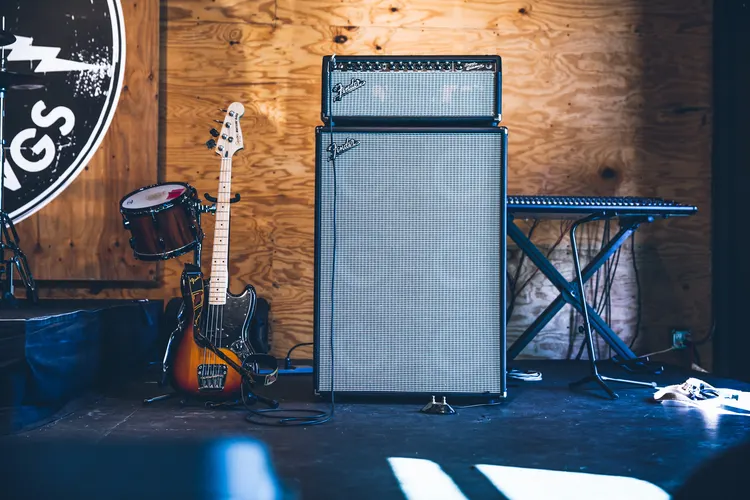
Q: What Does “Clean” Mean on a Guitar Amp?
A: In the context of guitar amplifiers, “clean” refers to a sound that is pure, uncolored, and without distortion or overdrive. Clean guitar amps are designed to faithfully reproduce the natural tone of the guitar, maintaining clarity and articulation even at higher volume levels. This makes them ideal for genres that require distinct and pristine guitar sounds.
Q: What is the Best Vox Clean Amp?
A: The best Vox amp known for its clean sound is the Vox AC30. This iconic amplifier is celebrated for its distinct British chime and ability to produce clear, articulate tones. It’s a favorite among guitarists who seek a blend of classic clean sound with the option for smooth overdrive.
Q: What are the Different Types of Guitar Amps?
A: Guitar amps generally fall into four main categories:
- Tube Amps: Known for their warm, rich tones and natural overdrive. They’re favored for their dynamic response and tonal depth.
- Solid-State Amps: These amps use transistor circuits and are known for their reliability and consistency. They provide a clean, clear tone and are usually more affordable than tube amps.
- Hybrid Amps: Combining tube and solid-state technologies, hybrid amps offer the warmth of tubes in the preamp section with the reliability of solid-state in the power section.
- Modeling Amps: These digital amps use software to emulate the sound of various amp types and effects, offering versatility and convenience.
Q: How Do I Choose a Good Guitar Amp?
A: Choosing a good guitar amp involves considering several factors:
- Your Musical Style: Determine if the amp suits the genre you play. For example, jazz and blues players may prefer amps with rich clean tones.
- Amp Type: Decide between tube, solid-state, hybrid, or modeling amps based on your tonal preference and practical needs.
- Power and Size: Consider the venues you’ll be playing at. A larger, more powerful amp is suitable for gigs, while a smaller amp might be better for home practice.
- Features: Look for features like built-in effects, channel switching, and input/output options that suit your playing needs.
- Budget: Set a budget and find the best amp within your price range that meets your requirements.
Remember, the best clean guitar amps are those that align with your personal style, offer the right features, and fit within your budget while delivering the desired sound quality.
Buyer’s Guide: Choosing the Right Clean Guitar Amp
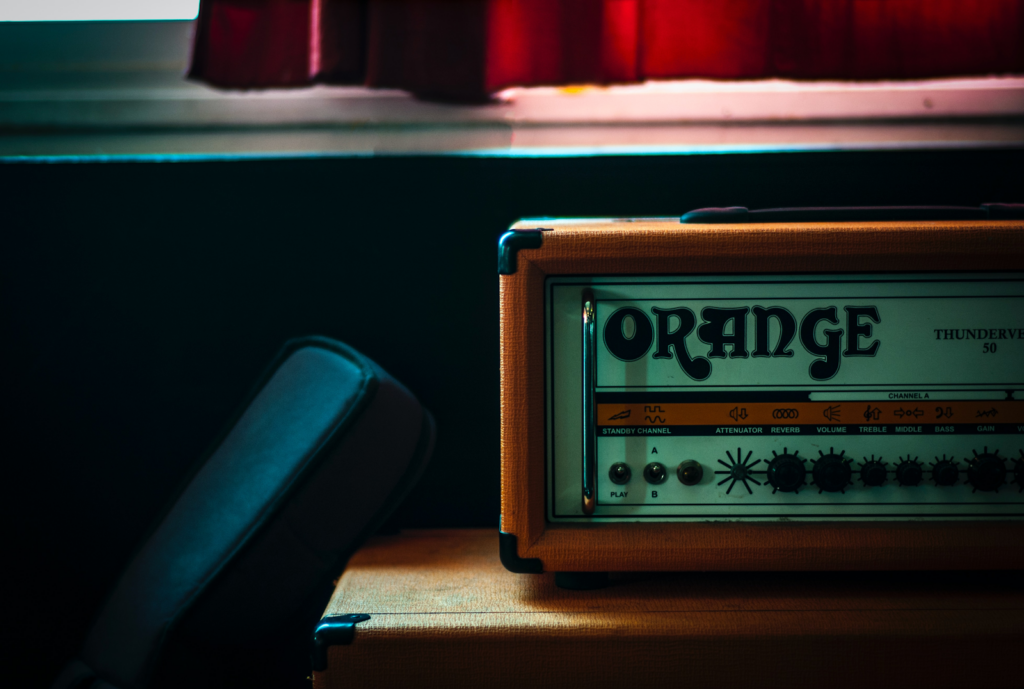
When it comes to finding the right clean guitar amp, there are several factors to consider. This guide will delve into expert-level topics to help you make an informed decision.
Understanding Clean Guitar Amps
A clean amp, in the realm of guitar amplification, refers to an amplifier specifically designed to produce a clear, undistorted, and articulate sound at various volume levels. Unlike amps geared towards producing heavy distortion or overdriven tone, clean amps are prized for their ability to accurately and purely amplify the natural sound of the guitar.
This means that when you play your guitar through a clean amp, the notes and chords you strum or pick are amplified in a way that remains true to their original tone, without adding extra grit or coloration commonly associated with overdrive effects. This is also an excellent practice amp.
Clean amps are essential in genres of music where clarity and precision of the guitar’s sound are paramount. This includes styles like jazz, country, and certain forms of blues and rock, where the nuances of the guitar’s natural tone, including the subtleties of fingerpicking and chordal harmonics, need to be heard clearly.
These amps often have a high headroom, which refers to their ability to remain clean and undistorted at higher volume levels. This feature is particularly important for guitarists who need to play loud but want to maintain a crisp, unaltered sound. Clean amps also serve as an excellent foundation for guitarists who prefer to use pedals to add effects, as they offer a ‘blank canvas’ that accurately captures and projects the effects applied through the pedalboard.
What Makes a Good Clean Guitar Amp?
- Clarity and Articulation: A good clean guitar amp should provide a clear and articulate sound, maintaining tone quality even at higher volumes.
- Headroom: It should offer enough headroom to play loudly without distorting the signal.
- Responsiveness: The amp should respond well to different playing dynamics and guitar pickups.
Key Features to Look For
- Volume Controls: Precise volume controls for managing the balance between clean and overdriven tones.
- EQ Settings: Effective bass, mid, and treble controls for shaping the amp’s clean sound.
- Built-in Reverb or Effects: Look for quality built-in effects like reverb, which is essential for adding depth to clean tones.
Fender Amps: A Benchmark in Clean Sound
Why Fender Amps Stand Out
- Iconic Tone: Fender amps, like the Fender Twin Reverb, are known for their iconic clean guitar amp sound.
- Versatility: These amps are versatile, suitable for genres ranging from jazz to rock.
- Build Quality: Fender amps are renowned for their sturdy construction and long-lasting reliability.
Fender Twin Reverb: A Classic Choice
- The Benchmark: The Fender Twin Reverb is often considered the benchmark for clean sound, offering lush, full-bodied tones.
- Power and Headroom: As a moderately powered amp, it provides ample headroom for a clean, undistorted sound at high volumes.
Combo Amp vs. Head and Cabinet
Understanding Combo Amps
- All-in-One Solution: A guitar combo amplifier integrates the amplifier and speakers into one unit, offering convenience and portability.
- Ideal for Most Settings: Combo amps are suitable for a variety of settings, from home practice to live performances.
Deciding Between Combo and Separate Head/Cabinet
- Space and Portability: Consider whether the ease of transport of a combo amp outweighs the versatility of a separate head and cabinet setup.
- Customization: Separate units allow for more customization but require a deeper understanding of amp pairing and signal chain.
Signal Chain Considerations
The term “signal chain” might sound technical, but its concept is quite straightforward, especially when explained in the context of audio and music production. Let’s break it down for someone with no prior audio experience.
What is a Signal Chain?
A signal chain refers to the path that an audio signal takes from its source to the output. In simpler terms, it’s the series of devices your sound travels through from start to finish. Imagine it like a river flowing from the mountain (the source) to the sea (the output), passing through various landscapes (audio devices) on its way.
Components of a Signal Chain
The typical components of a signal chain include:
- Source: This is where the sound originates. In a guitar setup, the source is the guitar itself. In a recording studio, it could be a microphone capturing vocals or an instrument.
- Processing Devices: After the sound is produced, it often goes through various devices that alter or enhance it. These can include:
- Pedals or Effects Units: For a guitarist, this might mean distortion, reverb, or delay pedals.
- Preamps: These amplify the signal to a level where it can be further processed. They are especially important in studio settings for microphones.
- Equalizers: Devices that adjust the balance of frequencies in the audio.
- Compressors: These manage the dynamic range of the audio, ensuring that the volume stays within a certain range.
- Amplifiers: In the case of electric guitars, the signal then travels to an amplifier, which increases its power to drive the speakers.
- Output: Finally, the sound reaches the output device. This could be a speaker, a recording device, or headphones.
Importance of Signal Chain
Understanding your signal chain is crucial because each element affects the final sound. The order of the components, particularly effects units, can drastically change the tone and quality of the audio. For example, placing a reverb pedal before a distortion pedal will create a vastly different sound compared to placing it after the distortion.
Tailoring Your Signal Chain
Tailoring your signal chain is about understanding the role of each component and arranging them to achieve your own desired tones and sound. For instance, a guitarist seeking a clean, sharp tone might prioritize a different signal chain order than one looking for a heavily distorted, echoey sound.
Importance in Tone Shaping
- Order of Effects: The order of pedals in your signal chain can significantly affect the amp sounds.
- Clean Foundation: A good clean guitar amp provides a strong foundation for building your desired tone with pedals and effects.
Integrating Effects with Clean Amps
- Effects Loop: Look for amps with an effects loop, especially if you’re using modulation or time-based effects.
Solid State Amp vs. Tube Amps
When comparing solid-state amps and tube amps, it’s important to understand how each impacts the sound and performance of a guitar amplifier.
Solid State Amps
Technology: Solid-state amps use transistors for their preamp and power sections. This technology came into prominence after the invention of the transistor in the mid-20th century.
Tone: These amps are known for producing a clean, clear, and consistent tone. They are excellent for guitarists who require a pristine clean sound or those who prefer to shape their tone using pedals.
Reliability: Solid-state amps are generally more reliable and durable. They are less susceptible to damage from being moved around, making them a good choice for gigging musicians.
Maintenance: They require less maintenance than tube amps, as solid-state components are not prone to degradation over time in the same way that vacuum tubes are.
Price: Typically, solid-state amps are more affordable, which makes them a popular choice for beginners and budget-conscious players.
Tube Amps
Technology: Tube amps, also known as valve amps, use vacuum tubes in their preamp and power sections. This technology dates back to the early days of electric guitar.
Tone: Tube amps are celebrated for their warm, rich, and dynamic tone. They naturally produce a pleasing harmonic distortion when driven hard, which is highly sought after by many guitarists, especially for blues, rock, and other genres where a warm, natural overdrive is desired.
Responsiveness: These amps are highly responsive to the player’s touch, offering a nuanced expression that reacts to how hard you play the strings.
Maintenance: Tube amps require more maintenance. Tubes need to be replaced periodically and can be sensitive to knocks and temperature changes.
Price: Generally, tube amps are more expensive than solid-state amps, both in initial cost and maintenance over time.
The choice between solid-state and tube amps often comes down to personal preference and intended use. Solid-state amps offer reliability, consistency, and affordability, making them a great choice for clean tones and pedal-heavy players. Tube amps, on the other hand, are prized for their warm, organic tone and dynamic response, making them a favorite for players seeking a natural overdriven sound and expressive playing experience.
Benefits of a Solid State Amp
- Reliability: Solid state amps are generally more reliable and require less maintenance than tube amps.
- Consistent Sound: They offer a more consistent sound and are often more affordable.
High Gain Amps and Clean Sounds
- Clean at High Volumes: High gain amps are not typically known for their clean sounds, but some modern solid state and hybrid amps manage to provide clean tones even at high gain settings.
Additional Features to Consider
Headphone Jack
- Practice Flexibility: A headphone jack is essential for silent practice, making it a useful feature in home or late-night settings.
Power and Venue Size
- Match the Venue: Choose a moderately powered amp for smaller venues and a more powerful amp for larger spaces.
Choosing the best guitar amps for clean sound involves balancing factors like tone, features, and practical needs. Whether you prefer the iconic clean guitar amp sound of a Fender Twin Reverb or the versatility of a modern solid state amp, the key is to find an amp that resonates with your personal style and enhances your musical expression.
Conclusion: Embracing the World of Clean Guitar Amps
As we wrap up our exploration of clean guitar amps, it’s clear that the perfect amp is not just about the technology behind it, whether it be solid-state or tube, but also about how it aligns with your personal style and playing needs. From the iconic Fender Twin Reverb to the versatile and modern solid-state amps, each offers a unique pathway to achieving those crystal-clear tones that define so much of our musical landscape.
For guitarists who are always on the move, the world of battery-powered amps presents a realm of possibilities. Explore further in our Ultimate Guide to the Top Battery-Powered Amps, where portability meets quality.
And for those on a budget, great tone doesn’t have to come with a high price tag. Our Affordable Sound: The Top Cheap Guitar Amps article dives into options that are friendly to your wallet without compromising on sound quality.
In the end, whether you’re a seasoned professional or a budding guitarist, the quest for the perfect clean guitar amp is a journey of finding a balance between sound quality, functionality, and personal expression. Remember, the best amp is the one that not only captures the essence of your sound but also inspires you to play and create.



